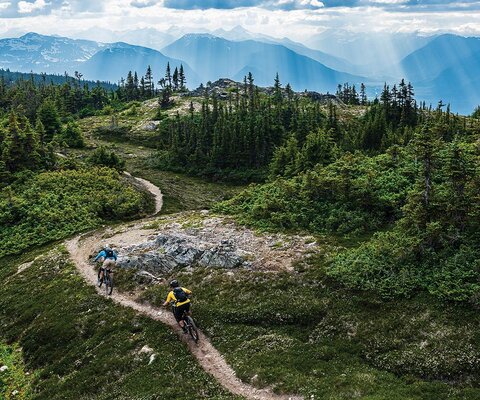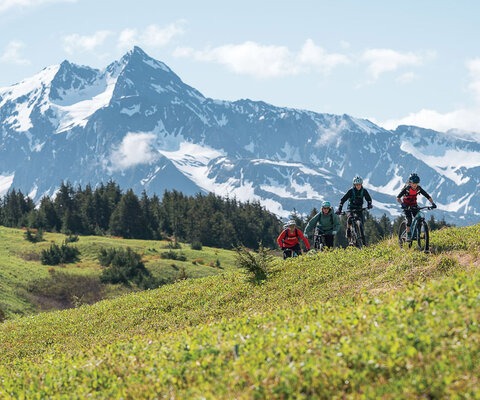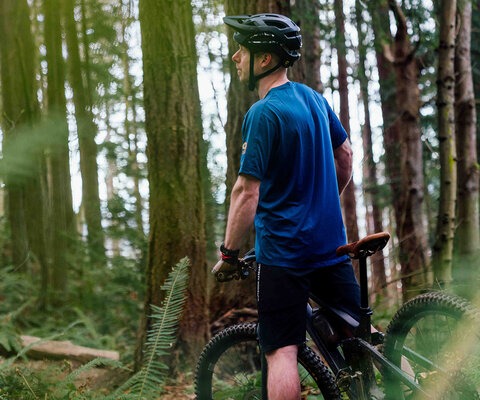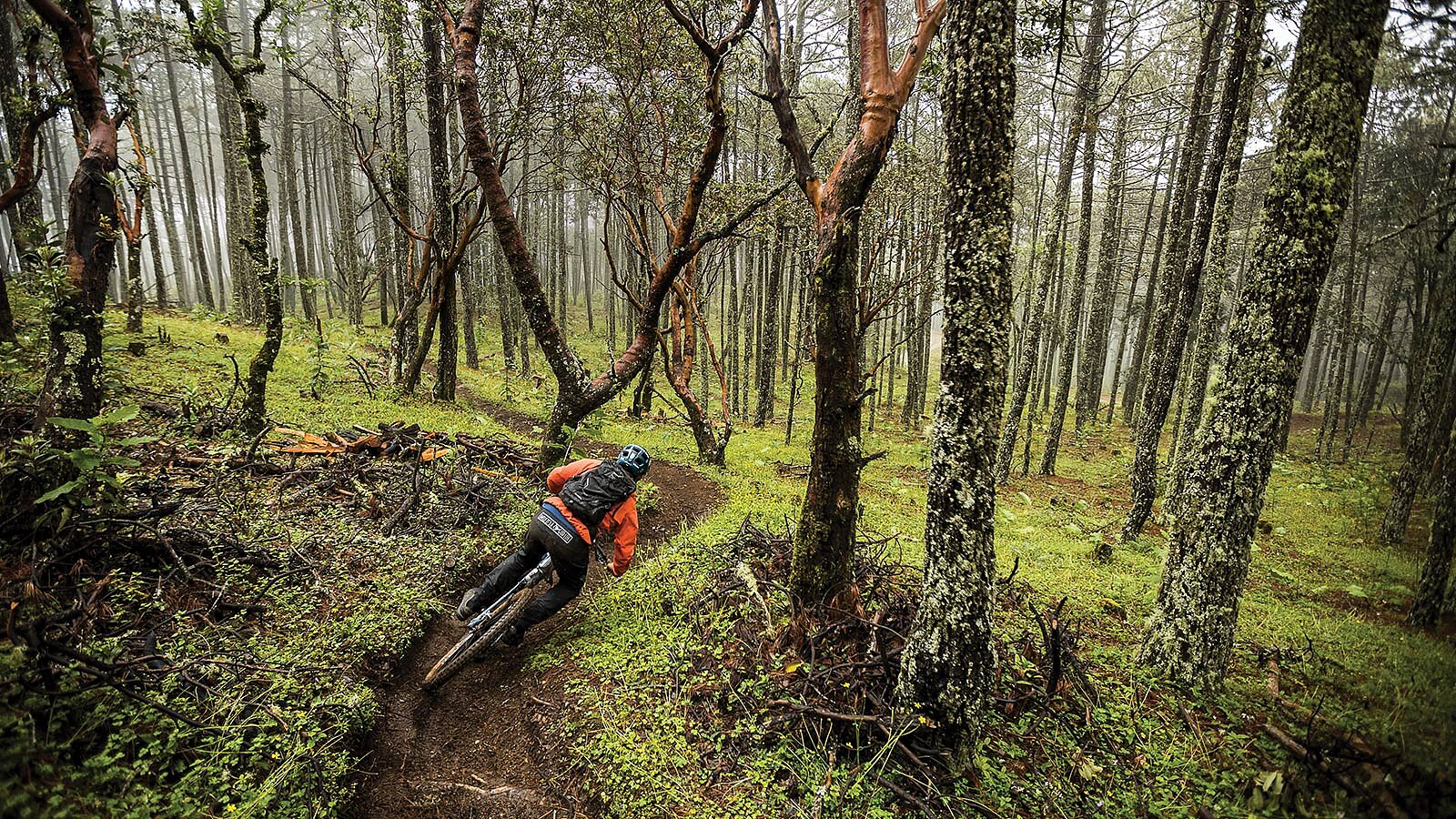
Los Senderos De Oaxaca Southern Mexico's Soul-Filled Singletrack Ascendancy
Words by Brice Minnigh | Photos by Riley Seebeck
An eerie calm pervades the brisk morning air as a steady patter of light rain mesmerizes a small group of riders huddled underneath a towering cluster of ferns. A dense fog cloaks the forest, silhouetting the gnarled branches of lichen-encrusted oaks against a hazy sea of grey. Mirroring the texture of the trees, a dark-brown ribbon of singletrack winds through clumps of bright-green moss, bisecting the forest floor in harmony with its natural contours.
Suddenly the stillness is ruptured by the vibrations of tires rolling over roots and rocks, punctuated by the reverberating thuds of wheels pounding into deep beds of loam. The riders peer up the hillside in anticipation as a lone figure emerges from the mist and slashes a sharp lefthand turn, sending a plume of soil soaring several feet above the berm’s wounded lip.
“Woo-hoo-hoo!” the figure shouts as he thunders past the group, followed closely by a second rider, answering his exclamations in the universal language of mountain bikers enraptured by weightless motion.
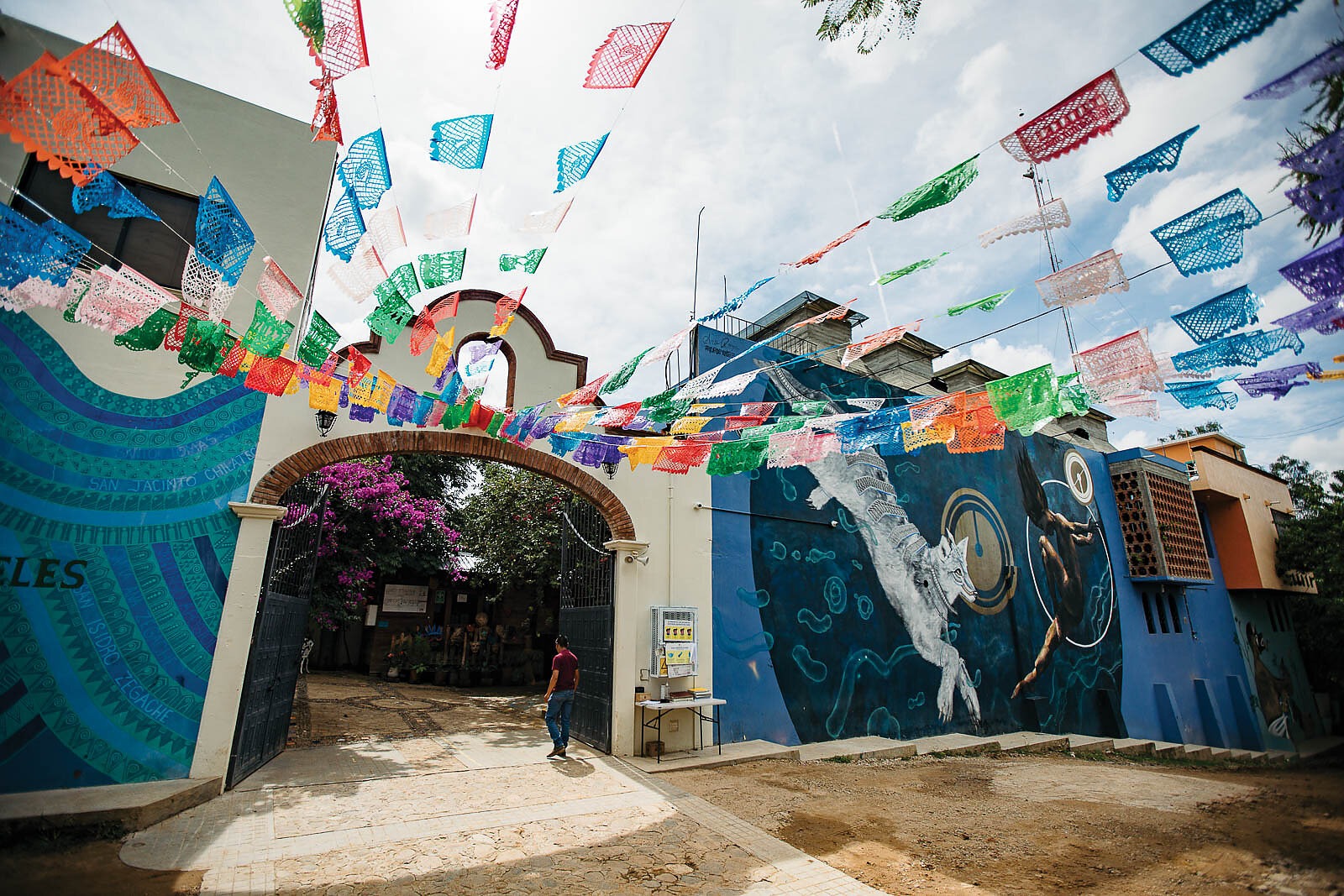
As they disappear around the next corner, the others quickly mount their bikes and take up the chase, spurring each other on in shrill bursts of Spanish while drifting effortlessly through the trail’s sweeping turns. The track is a masterpiece of intuitive flow, meandering and dropping in tandem with the mountain’s most dramatic sections of relief, making it easy to maintain speed with minimal amounts of pedaling or braking. After several minutes of blissful descending, the trail levels out in a clearing, where the riders reconvene in a flurry of high-fives.
“Hijo mano!” chirps the speed demon in front, 31-year-old Luis Aguilar, affectionately known as “Huicho.” “Ese sendero fue rápido, güey (that trail was fast, man)!”
The sendero (trail) is named Jabalí (Wild Boar in Spanish), and its inherent speed and fluidity—coupled with the lush woodlands through which it snakes—could easily fool one into thinking it is somewhere in the Pacific Northwest. But a closer inspection of the surrounding flora, replete with gargantuan wild agave plants, reveals that this could only be in the southwestern Mexican state of Oaxaca—the global epicenter for production of the smoky spirit known as mezcal.
Far from being a one-off, Jabalí is part of an extensive singletrack network in the Sierra Juárez, among the highest reaches of the Sierra Norte region and the crown jewel of the Sierra Madre de Oaxaca range. These mountains are filled with some of Mexico’s finest trails, located on the outskirts of the Santa Catarina Ixtepeji township, just 30 miles north of the state’s capital, Oaxaca de Juárez (known simply as Oaxaca, or Oaxaca City).

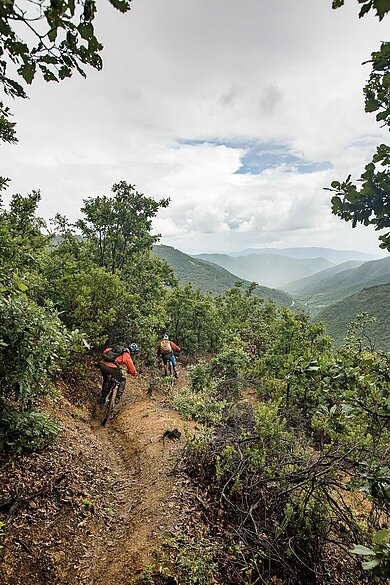
As the drizzle turns into a downpour, the crew dons rain shells and drops into another high-speed roller coaster that plummets down a series of steep, rocky sections, periodically crisscrossing ravines through a succession of wide, bermed corners that practically double back on themselves. From above, the trajectory through these gullies resembles the tracks of a giant sidewinder rattlesnake, with graceful arcs carved up and down the sides of opposing banks. The trail is aptly named Corralito (Playpen), and the locals treat it as such, making liberal use of wellplaced stone features to gap root carpets that are becoming greasier as the rain comes down.
The scenery along the way is spectacular. In just a few exhilarating miles, the route has spilled from the misty cloud forest of the highlands through dense groves of hardwoods draped in long strands of hanging moss. Mushrooms of all shapes, sizes, and colors line the trailside, creating a kaleidoscopic feast for the eyes as riders blaze by them. Corralito eventually leads into an evergreen thicket, where a blanket of bright-orange pine needles covers the ground. Huicho stops at an overlook and gazes at the broad valley below. It’s clear the descending has only begun.
“Now comes the real fun,” says Javier Salazar, the 35-year-old owner of guiding outfit Oaxaca Bike Expeditions. “We’re gonna ride Llano Carreta (Horsecart Plain) all the way to the bottom. It’s a black diamond. With all this rain, it’s gonna be interesting.”
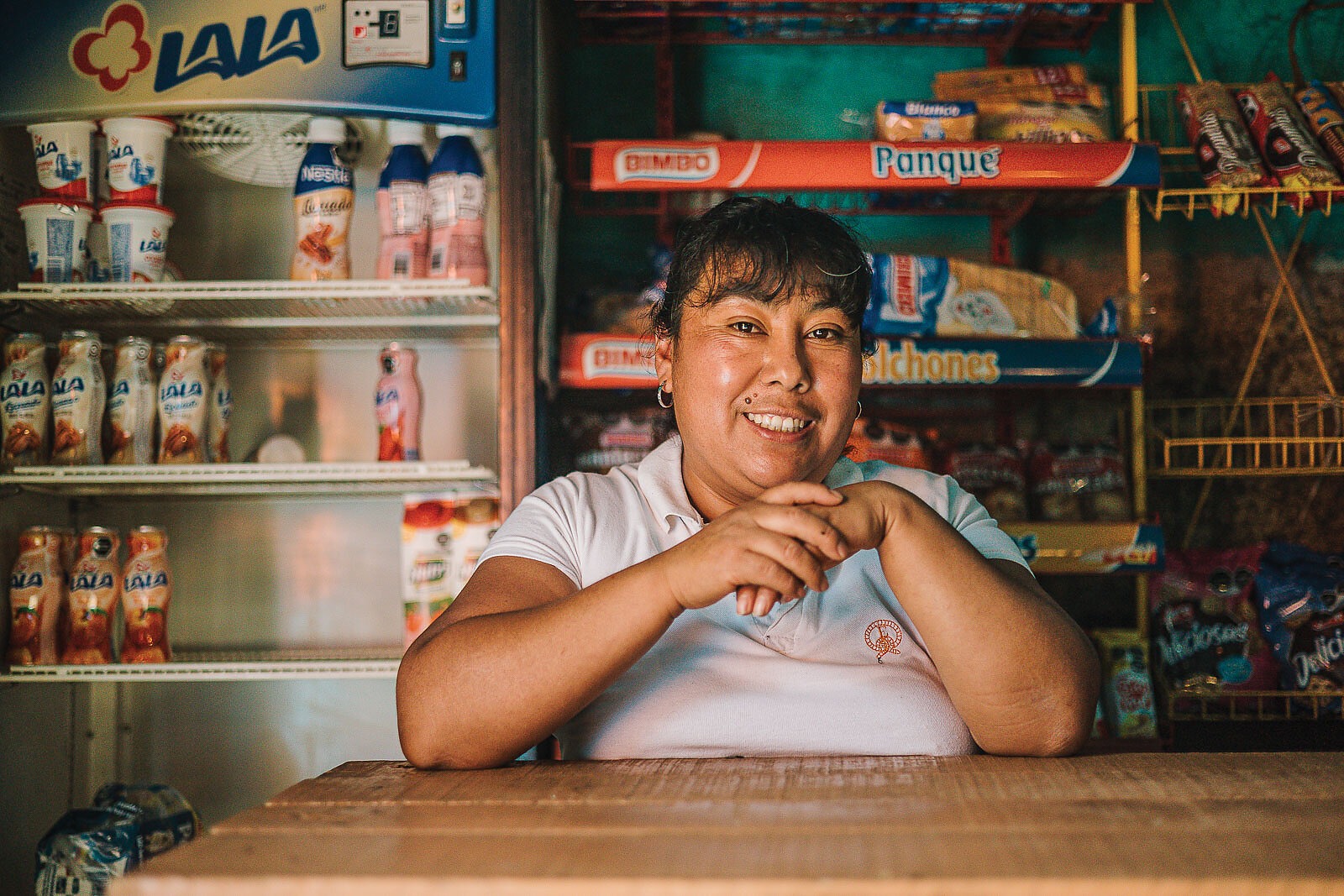
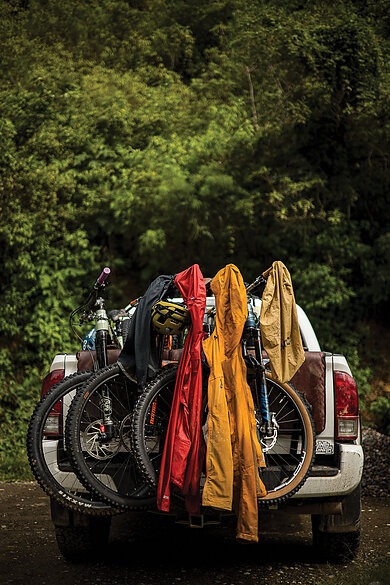
Javier’s prediction is accurate, though the word “interesting” is euphemistic at best. The track, hollowed out by centuries of mule-drawn cart traffic, is downright rowdy, with wheel-snagging rain ruts, rock gardens, and exposed stretches of bedrock coated in slick mud. An intrinsic channel for runoff during the rainy season, the trail has become a veritable creek, but the two-inch-deep stream flowing down its center thankfully provides much-needed traction. Despite the challenges, spirits remain high, as evidenced by the howls of laughter echoing through the arroyos.
After 45 minutes of relentless descending (and more than 3,000 feet of elevation loss), the riders finally coast into a village, where a woman and her young son greet the mud-caked brigade and offer a hosepipe to spray down bikes and bodies. With the bulk of the grime removed, they follow the woman up a flight of wooden stairs, where a rustic table topped with piping hot Oaxacan staples awaits. A nourishing broth breaks the chill, while enormous chargrilled tlayudas stuffed with beef, beans, lettuce, and liberal amounts of quesillo (a white, stringed Oaxacan cheese) provide much-needed replenishment. Washing down the meal with icecold cervezas, the riders listen as their host imparts a brief history of the Santa Catarina Ixtepeji trails and what they have meant to her village, known locally as El Estudiante.
“The villagers have long used these trails into the mountains to collect firewood and harvest resin from the trees,” 36-year-old Teresa Martinez Pèrez says in Spanish. “The trails have always been a lifeline for our village, but now that so many mountain bikers are coming it has created many new opportunities. We have more sales, more work, and more jobs in our community because of mountain biking.”
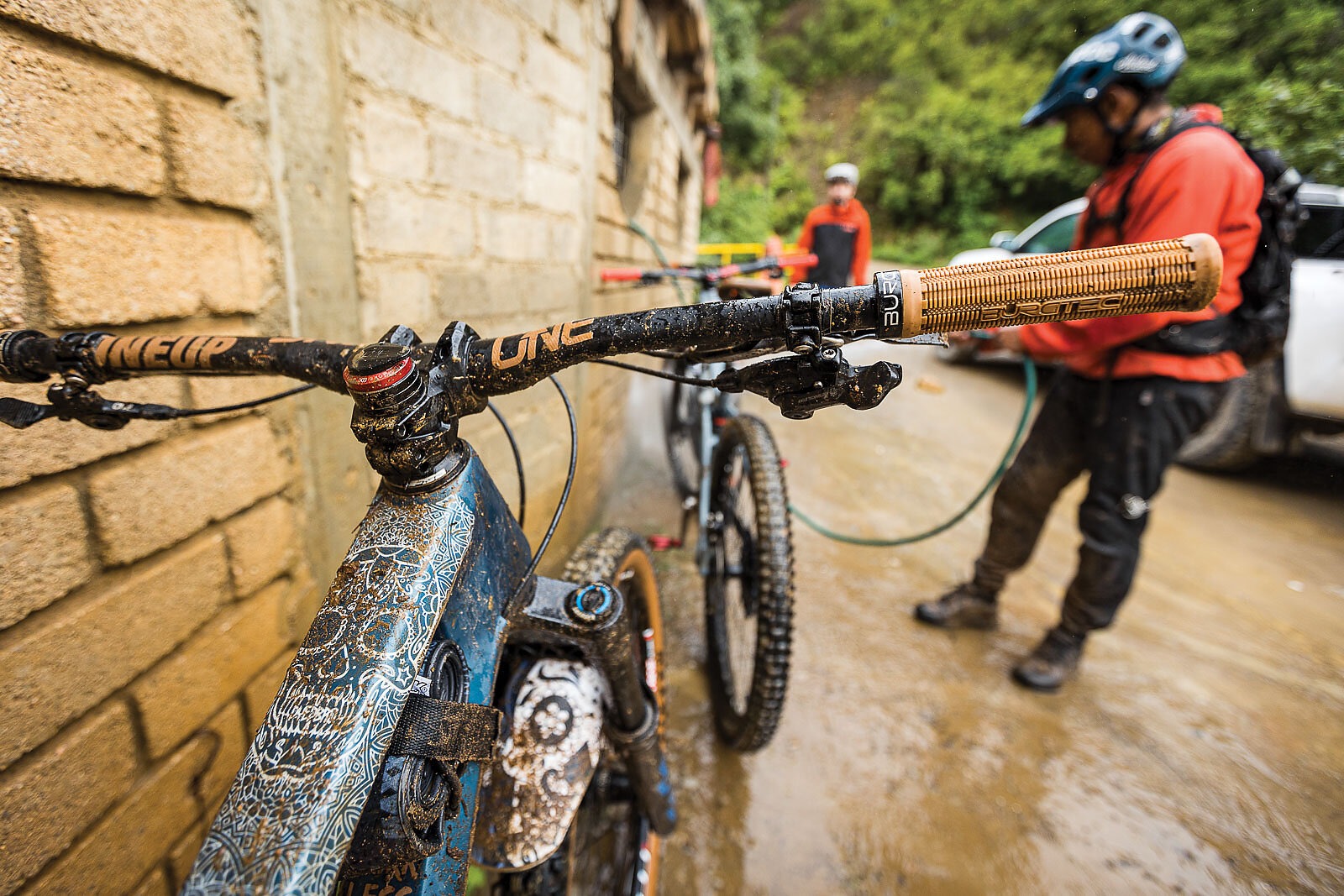
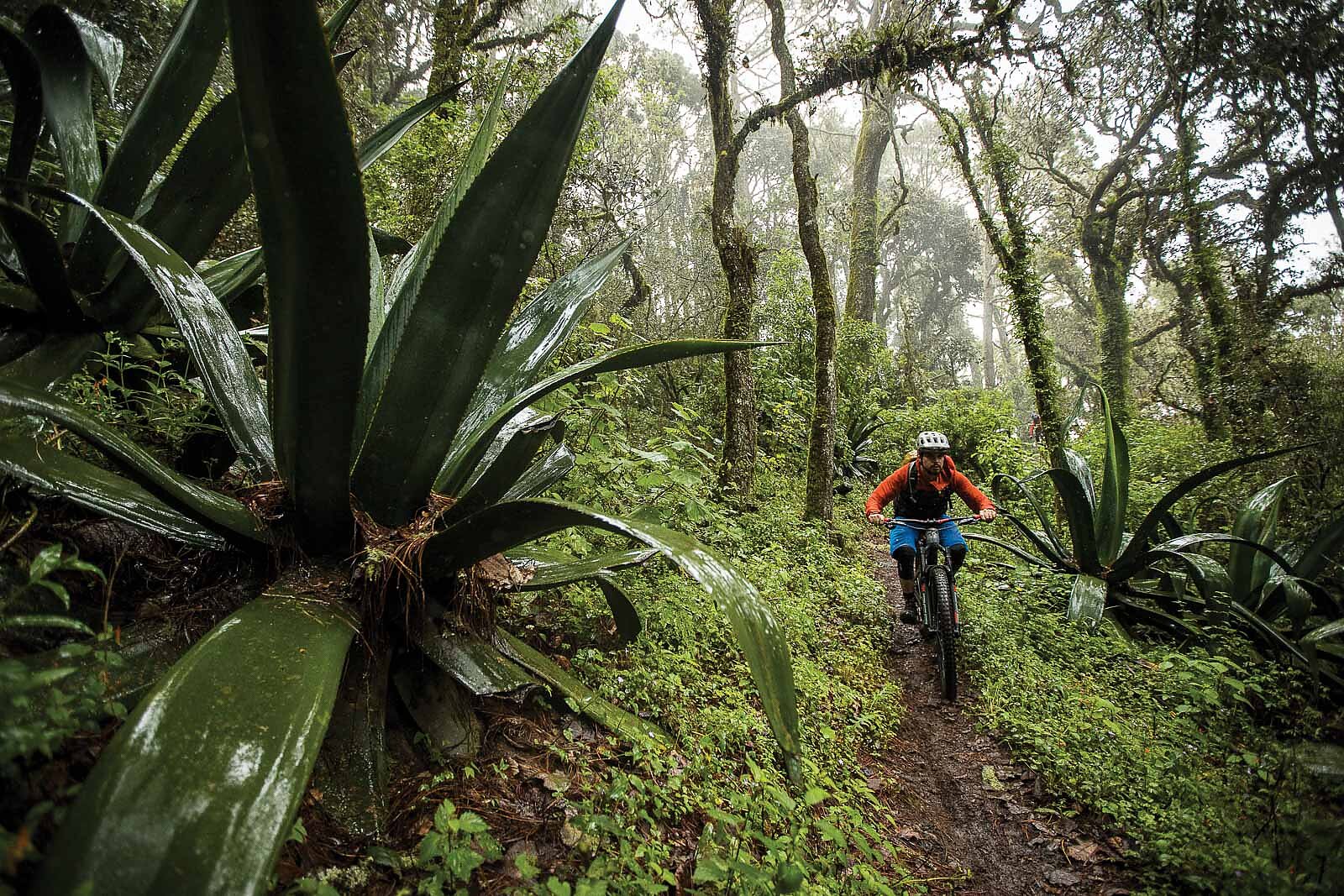
While Oaxaca’s sprawling southern coastline has for decades drawn surfers in search of its pristine Pacific Ocean pointbreaks, its mountainous interior has only recently captured the attention of domestic and international travelers. The Sierra Norte region’s ruggedness has for centuries protected it from intrusions, and its largely indigenous populations have remained relatively insulated from the cultural assimilation of the Spanish colonial period. Many ancient traditions remain, and indigenous folklore continues to have a defining influence on the state’s unique, self-determined identity.
Due in part to its isolation, this mountainous region’s trails were mostly untouched by the outside world until the mid-2000s rise of ecotourism put them on the map for hikers from other parts of Mexico and abroad. Still, the influx of tourists was minimal, and when the first local mountain bikers started exploring the trails in the late 2000s they pretty much had them all to themselves. And it wasn’t long before they realized that, with the blessing of the people who inhabit the foothills and valleys below, they could improve the trails for bike riding and even expand the existing networks.
One of the original trailbuilders is Alberto Rasgado Diaz, a Oaxaca City native who first began riding the trails of Santa Catarina Ixtepeji in 2012. At that time, he would load his bike on top of a public bus from the city to the village and then pedal for hours up dirt roads to access the footpaths used by villagers.
“The local people of Ixtepeji saw that I was spending a lot of time there, so they showed me many of the old paths that connect the communities, as well as others that are used for collecting plants and firewood, and even for hunting,” says Alberto, now 42, who goes by the short version of his name, “Beto.” “After I got to know many of the locals, I asked them if I could clear the trails and fix them for bike riding, and they were very happy for me to do it.”
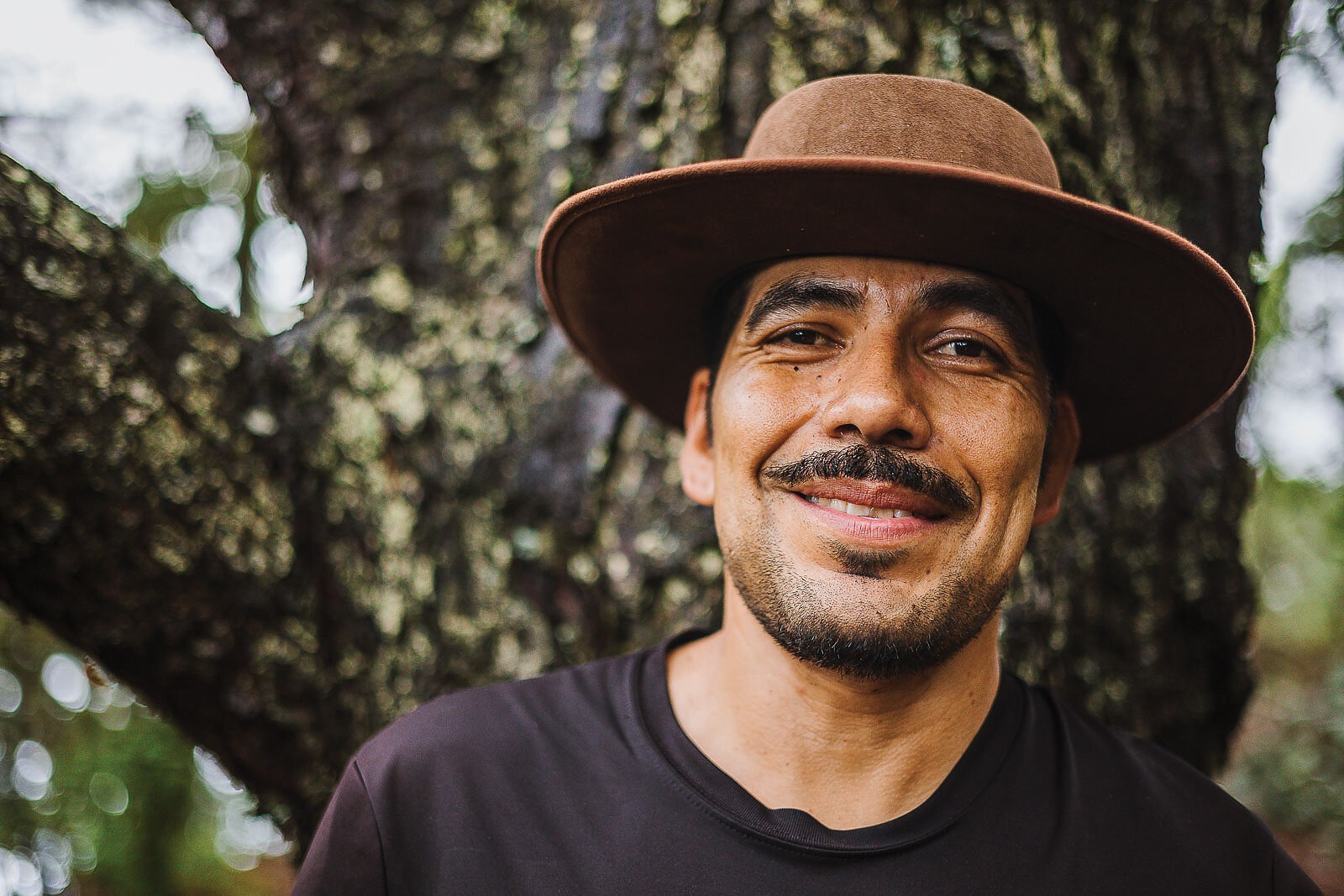
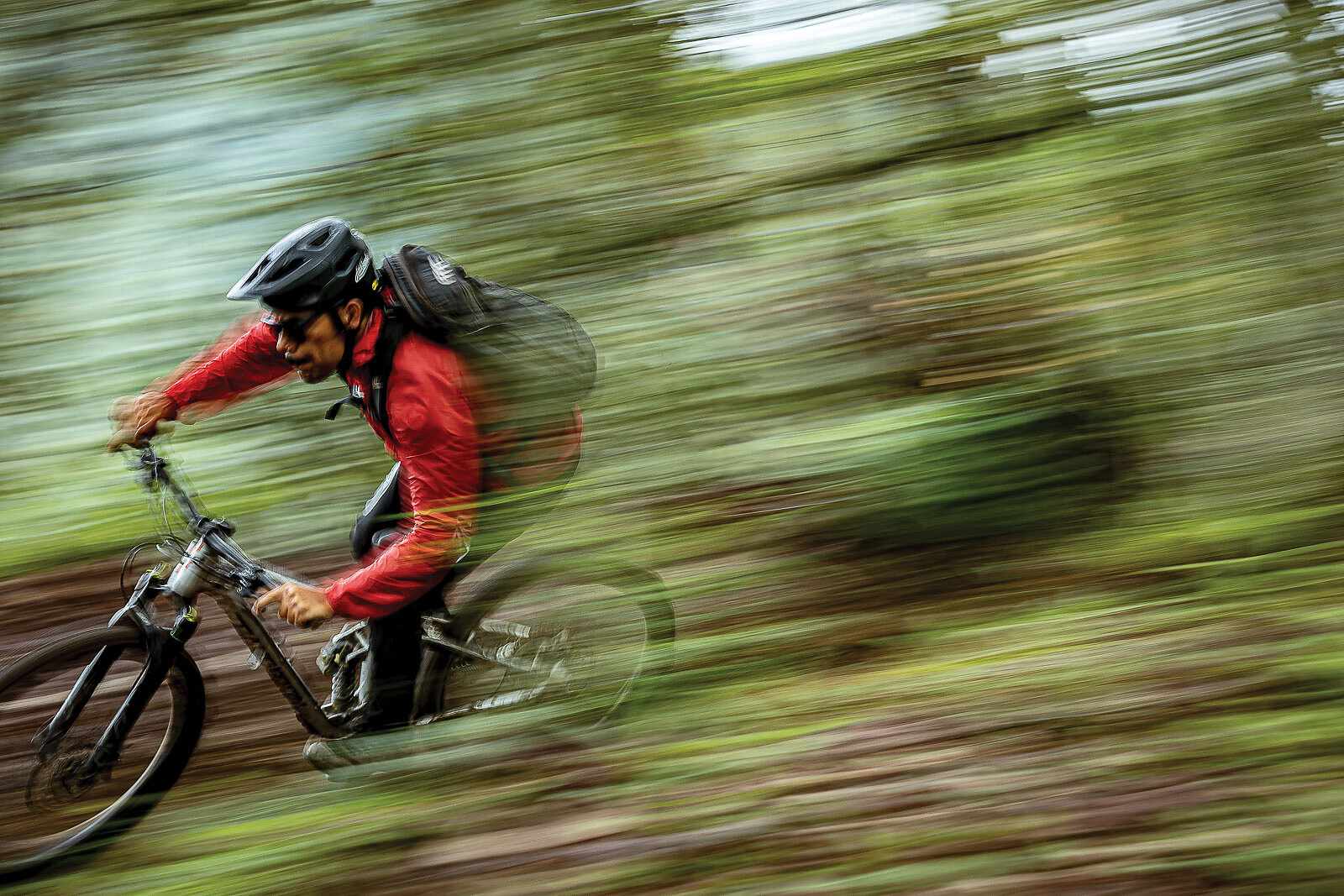
For the next three years, Beto, who was working as an elementary school teacher in Oaxaca City, continued to dedicate most of his leisure time to riding and improving the trails of Santa Catarina Ixtepeji and neighboring areas. He gradually recognized that it was his life’s passion and left his school-teaching job to build trail full-time. This decision coincided with the sudden upsurge of enduro racing in Mexico, and Beto quickly found himself enmeshed with regional enduro races working on course preparation, logistics, and medical support.
Before long, Beto and a couple of friends foresaw the international appeal of the Oaxaca trails for enduro racing, and they founded the multi-day TranSierra Norte race as a showcase of what the gravity-fed region has to offer. The first year gave racers a taste of Oaxaca that had them hooked on the trails, the people, the culture, and the food. It was obvious the event had a promising future. But, given the “blind racing” creed of enduro—in which each race must feature trails that have never been ridden by contestants—the need to build new trails every year became imperative.
Race proceeds were quickly reinvested into the construction of more trails. Beto soon began working with groups of several people and venturing into nearby districts of the Sierra Norte. In Santa Catarina Ixtepeji, they scratched in numerous connector segments to help link existing singletrack, while in neighboring zones they dug entirely new trails.

Word of Oaxaca’s growing abundance of worldclass trails was spreading like wildfire. Javier had founded Oaxaca Bike Expeditions (OBE) in 2017, initially attracting Mexican riders from more affluent states, such as Jalisco, Nuevo León, Chihuahua, and Sonora. Fully appreciating Oaxaca’s allure to international mountain bikers—particularly to neighbors from the United States and Canada—Javier began seeking media exposure in earnest.
“I was knocking on a lot of doors to bring some big-name pros here to film, so the world could see just how much we have to offer, and not just with the trails,” Javier says.
Eventually, he was able to lead Canadian freeriders Kurt Sorge and James Doerfling on a sojourn of Oaxaca’s finest trails, and when the resulting video of them shredding the steeps was released, the floodgates were open. During the next two years, a Who’s Who of North American Professionals came to ride with Javier and his guides: Canadians Mark Matthews, Geoff Gulevich, and French transplant Yoann Barelli have visited multiple times, while Americans Luca Cometti, Rachel Strait, and Greg Watts have made their own content gathering missions. The subsequent barrage of videos and photos appearing on social media and major websites put Oaxaca squarely in the sights of virtually every North American mountain biker with a passport and the means to travel. Within months, OBE was booking up tours year-round.
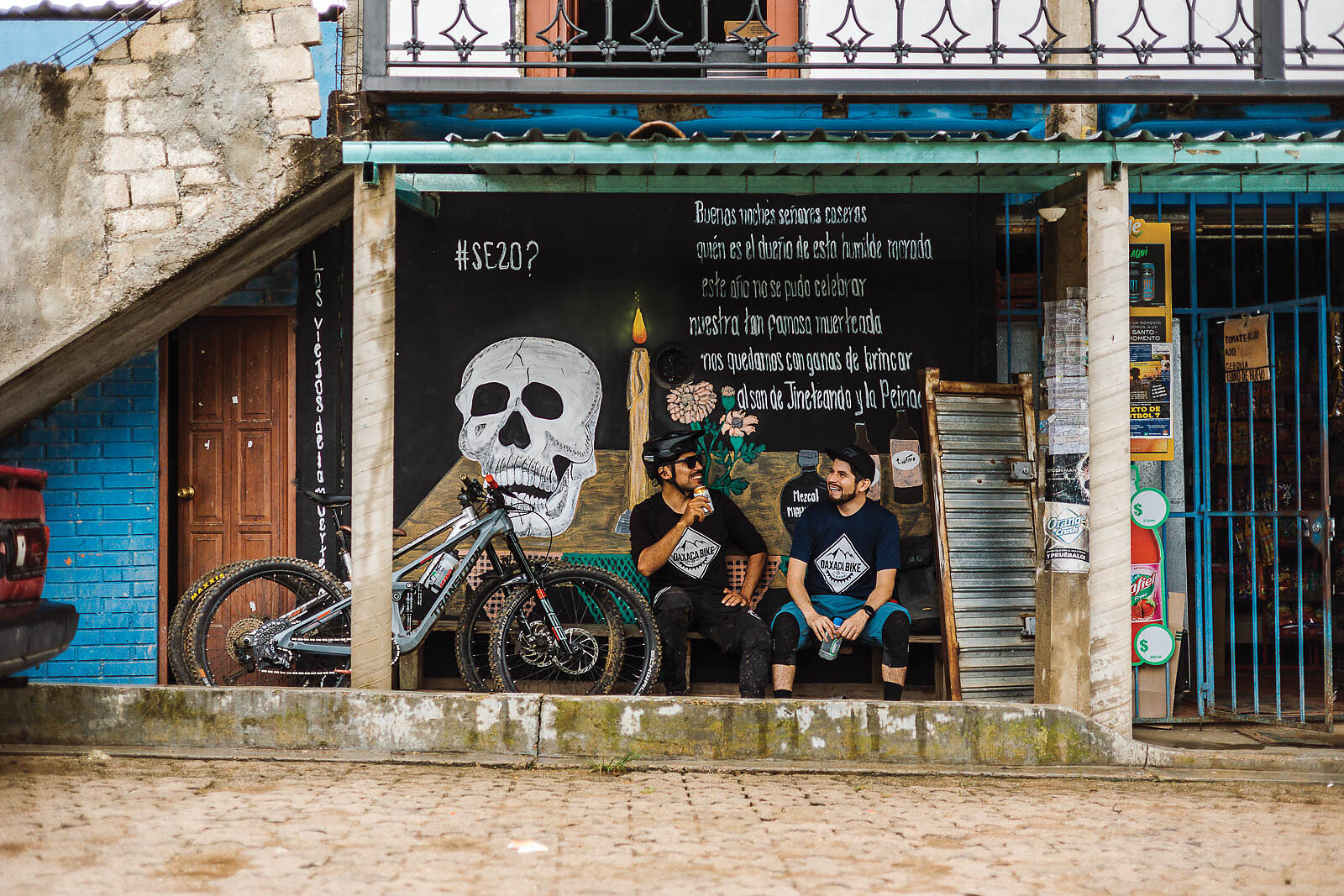
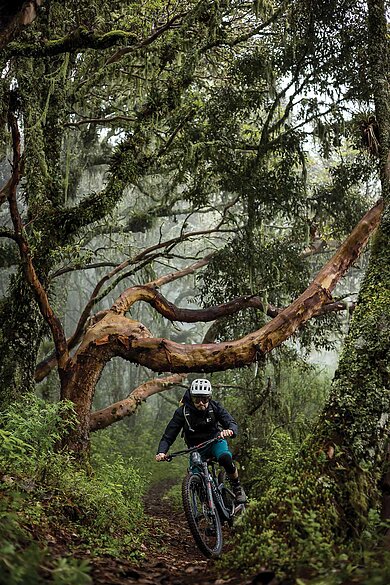
“All the videos and photos really helped to get things started, but what’s keeping it all going is the connections we’re making with the riders,” Javier says. “They come here and love the trails, the food, and the culture, and they tell all of their friends about it. And their friends come and then tell all of their friends.”
This snowball effect has brought a substantive increase in tourism-related returns to Oaxaca City and the communities close to the trail networks. The high-end hotel Javier uses for clients has multiple rooms filled regularly, and a handpicked rotation of award-winning, globally renowned Oaxacan restaurants can expect oversized tables packed with hungry mountain bikers on a weekly basis. Javier makes a concerted effort to spread the wealth to as many businesses as possible, especially those in the smaller communities near the main
singletrack systems.
With the steadily growing numbers on the trails, these communities are also benefiting from an uptick in earnings from the permits they require for access to the networks. At the same time, the need for routine trail maintenance and construction is spawning more work opportunities for able-bodied locals.

This is especially true in San Pablo Etla, a township about eight miles north of downtown Oaxaca City. As the gateway to La Mesita, an ecotourism reserve and butterfly sanctuary, San Pablo Etla receives valuable tourism revenue from visitors to the area. And over the past few years, mountain bikers have become a major driver of permitting proceeds, with each rider being required to pay roughly $10 for fireroad access to the sublime singletrack sprinkled throughout the preserve.
As a result, there has been a groundswell of support for mountain biking among San Pablo Etla residents, some of whom are being recruited for trail work by the likes of OBE and TranSierra Norte. This is generating new wages in a region where job opportunities are scarce.
“In the past, I would spend many days working with four to five people to build a trail, but now I would rather spend two days with 25 people to build a trail,” Beto says. “The people in the community are really smart, and they have learned how to build mountain bike trails that can flow.”
On a drizzly September morning, a half dozen San Pablo Etla locals join Beto in adding a new connector to the network at La Mesita, taking advantage of the forgiving, moisture-rich soil to hack out an elegant lefthand turn into a step-down descent. Not all of the workers are mountain bikers, but under Beto’s direction they are sculpting a section that blends flow with old-school tech, making savvy use of the terrain. This minimalist building style is coming to characterize the trails of San Pablo Etla, which can easily double as stages in a pro-level enduro race and present a challenging endeavor for advanced riders.
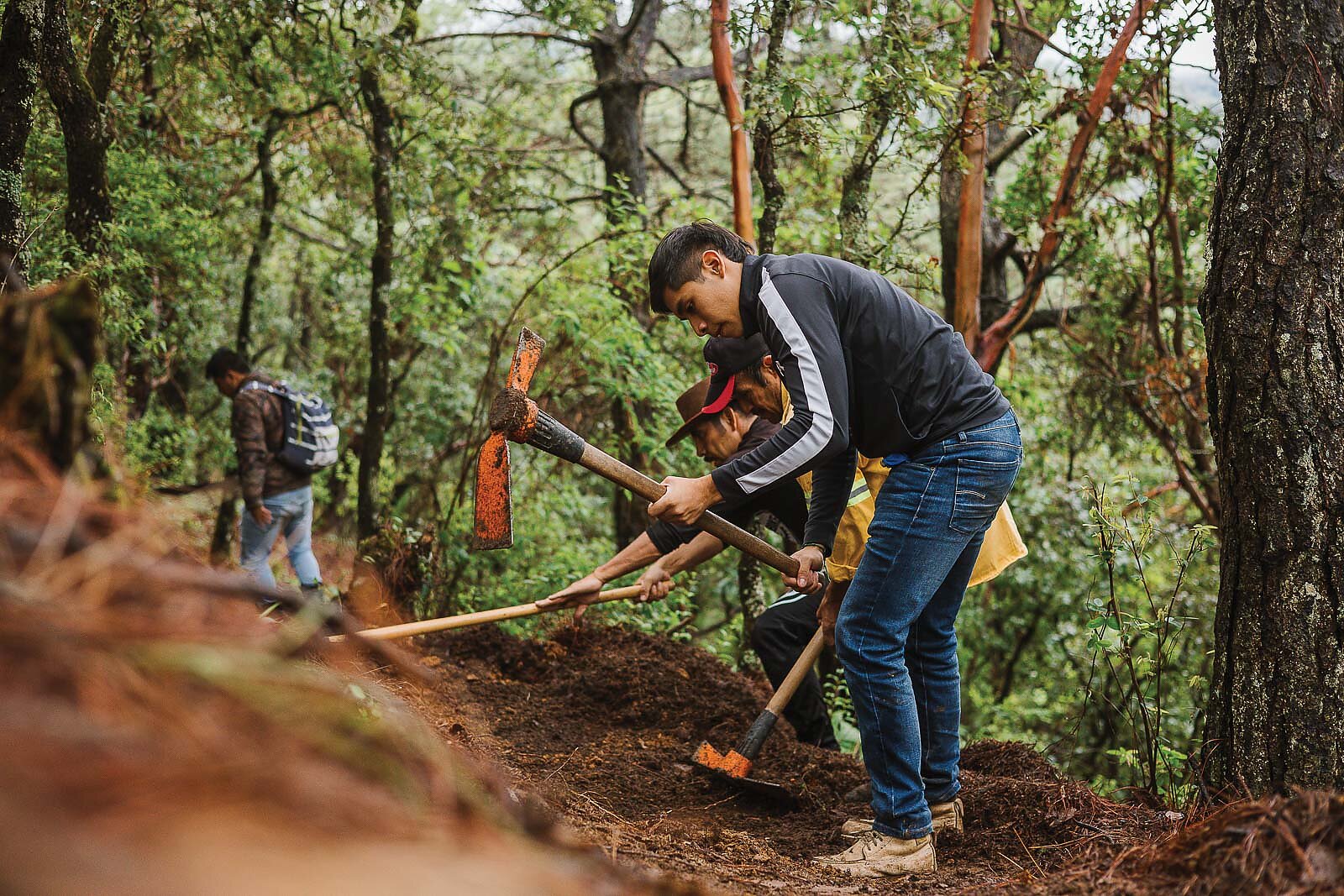
The eager guinea pigs for today’s session are Beto and Huicho, both of whom ride these trails weekly as part of their guiding duties for OBE. As expert riders, they have demanding expectations, and the ability to maintain high speeds while also negotiating root and rock features is paramount. Though the retention of top-to-bottom flow is central to the overall design, this never comes at the exclusion of technical obstacles that can test a rider’s chops. In Oaxaca, core riders are the masters of their own destinies. Nothing gets dumbed down for the mainstream. Here, a mainstream does not yet exist.
The sweet fruit of their labor is ripe as they weave along the verdant hillsides of La Mesita, stringing together a series of juiced-up descents with names like Huerta (Vegetable Garden) and Jardín Secreto (Secret Garden). Even though it’s the rainy season in Oaxaca, the thick canopy of broccoli-head treetops provides enough shelter to keep the dirt at a traction-friendly consistency. On these trails, traction equates to speed—of the pure and wanton variety.
Perhaps no-one embraces the physics of velocity through these forests more than Huicho, whose ninja-like bike handling seems to keep him just on the favorable side of the control spectrum. As he leads the charge down Soldado Universal (Universal Soldier), the pucker inducing plunge into the village, the brilliance of what these trailbuilders have achieved is resplendent.
Huicho himself is a prime example of mountain biking’s transformative power—and of the possibilities it can open in a place such as Oaxaca, which consistently ranks as one of Mexico’s four poorest states. Just a few years ago, Huicho was a laborer at an auto repair shop in Salina Cruz, about 175 miles southeast of Oaxaca City. His pay was low and there was little chance of advancement. Javier, a Salina Cruz native, knew Huicho and was impressed with his work ethic and energy level, so he invited him to join OBE despite his lack of mountain biking experience. Huicho was a sponge, learning everything he could about the sport and rapidly developing his bike skills. Today, he’s one of the fastest riders in Oaxaca, if not all of Mexico. And he’s making a good living doing something he loves: sharing Oaxaca’s best trails with fellow mountain bikers from all over the world.

For Javier, affording such employment options and elevating the profile of his beloved Oaxaca are two of his primary goals for OBE. He is fiercely proud of his home state and its vibrant culture, and he puts his money where his mouth is. Including himself, he now employs six people at OBE, with three guides, a shuttle driver, a photographer, and a logistics manager. Such is Javier’s commitment to the purity of the Oaxacan experience that only those born and raised in the state are eligible to work for his company.
“I love Oaxaca, and I know the culture of our people is very special,” Javier says. “I want to do everything I can to promote our culture, our land, and our people."
Much of this happens at a grassroots level, whether that means employing only Oaxacans or being selective about which local businesses will derive ancillary benefits from his clients. When buying trail-access permits for his groups, he will sometimes throw in a little extra because he knows it will help the communities that support the trails. Or when the main caretaker of La Mesita, Don Armando, who passed away in March 2023, urgently needed a prohibitively expensive eye surgery in 2021, OBE provided funds to facilitate it. To Javier, the concept is simple: Give to the community that gives to you.
Back in the mountains overlooking San Pablo Etla, Javier and Beto are having an animated discussion about the route. The question at hand: take the more scenic option, or barrel down a much burlier alternative that will give the gringos in tow a palpable sense of how critical the trails of the Sierra Juárez can be. The latter choice prevails. As Beto adjusts his helmet and prepares to drop in, a contented smile creeps across his face.
“I really like riding with Americans and Canadians,” he says. “They know how to ride, and they have a real culture of mountain biking. It might take some time for Mexico to have a bigger culture of mountain biking, but it’s going to happen.”
